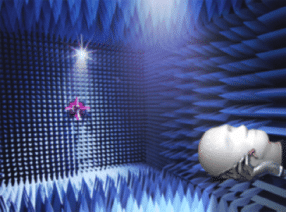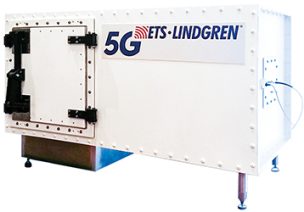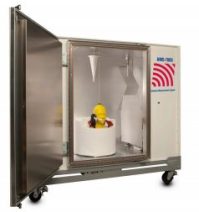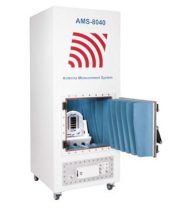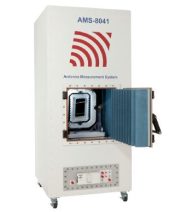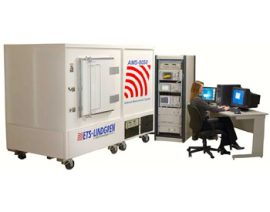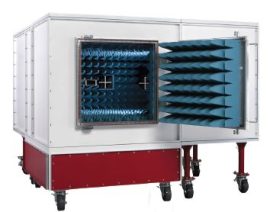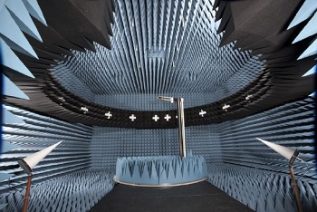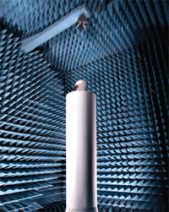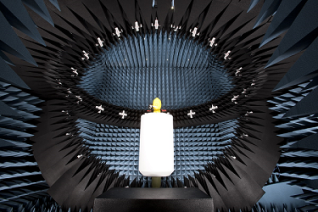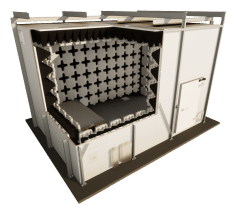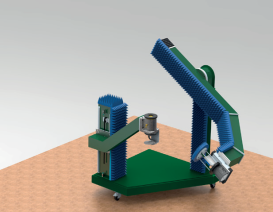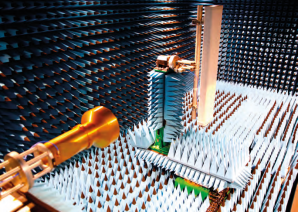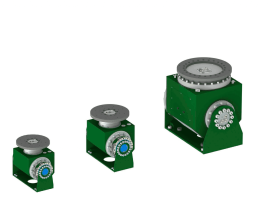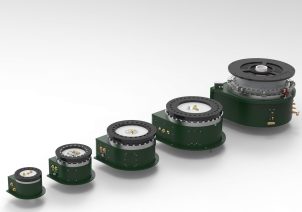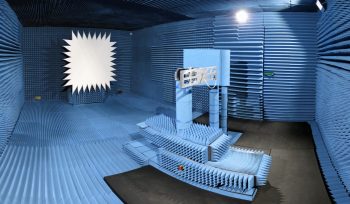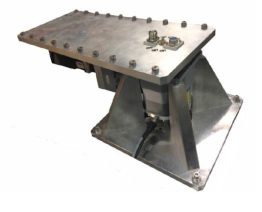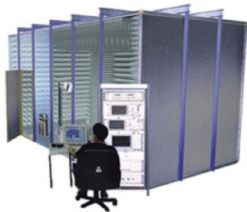Microwave & Communications /
Microwave Chambers
Microwave chambers are specialized testing environments used to evaluate the performance of microwave devices and components. These chambers are designed to contain and isolate electromagnetic radiation within the chamber, allowing for accurate and controlled measurements of microwave signals.
There are various types of microwave chambers, each with its own unique features and capabilities. One common type is the anechoic chamber, which is lined with materials that absorb electromagnetic waves and reduce reflections within the chamber. This allows for precise measurements of microwave signals without interference from external sources.
Another type of microwave chamber is the reverberation chamber, which creates a highly reflective environment that simulates a real-world environment for testing devices. This type of chamber is often used for testing the performance of wireless communication devices in environments with multiple reflecting surfaces.
Microwave chambers are used in a variety of industries, including telecommunications, aerospace, and defense. They are essential for testing the performance of microwave devices such as antennas, transmitters, and receivers, and can be used to evaluate the performance of devices under a range of conditions, including temperature, humidity, and pressure.
The design and construction of microwave chambers is a complex process that requires careful consideration of factors such as the size and shape of the chamber, the types of materials used, and the types of measurements that will be taken. In addition, calibration of the chamber is critical to ensure that accurate measurements can be made.
Microwave chambers are specialized testing environments used to evaluate the performance of microwave devices and components. These chambers are designed to contain and isolate electromagnetic radiation within the chamber, allowing…
...for accurate and controlled measurements of microwave signals.
There are various types of microwave chambers, each with its own unique features and capabilities. One common type is the anechoic chamber, which is lined with materials that absorb electromagnetic waves and reduce reflections within the chamber. This allows for precise measurements of microwave signals without interference from external sources.
Another type of microwave chamber is the reverberation chamber, which creates a highly reflective environment that simulates a real-world environment for testing devices. This type of chamber is often used for testing the performance of wireless communication devices in environments with multiple reflecting surfaces.
Microwave chambers are used in a variety of industries, including telecommunications, aerospace, and defense. They are essential for testing the performance of microwave devices such as antennas, transmitters, and receivers, and can be used to evaluate the performance of devices under a range of conditions, including temperature, humidity, and pressure.
The design and construction of microwave chambers is a complex process that requires careful consideration of factors such as the size and shape of the chamber, the types of materials used, and the types of measurements that will be taken. In addition, calibration of the chamber is critical to ensure that accurate measurements can be made.
-
ETS-Lindgren’s AMS-8000 system supports fully automated A-GPS receiver performance testing per Version 3.0 of the CTIA’s Test Plan for...FIND OUT MORE
-
High-Performance 5G Testing for Antennas The AMS-5700 is a compact and powerful antenna measurement system optimized for 5G mmWave wireless devices....FIND OUT MORE
-
ETS-LINDGREN’S AMS-7000 Wireless OTA Reverb Test System is designed to perform accurate and repeatable SISO TRP, TIS and Throughput measurements....FIND OUT MORE
-
THE ETS-LINDGREN AMS-8040 is a self-contained enclosure for making wireless device over-the-air performance measurements. The unit can be used for...FIND OUT MORE
-
The ETS-LINDGREN AMS-8041 is a self-contained enclosure for making wireless device over-the-air performance measurements. The unit can be used for...FIND OUT MORE
-
ETS-Lindgren’s Model AMS-8050 is a compact, fully anechoic RF enclosure for making over-the-air (OTA) performance measurements. The AMS-8050 is...FIND OUT MORE
-
ETS-LINDGREN’S AMS-8055 MIMO SINGLE CLUSTER ENVIRONMENT SIMULATOR is a compact, fully anechoic RF enclosure for making single cluster MIMO OTA...FIND OUT MORE
-
ETS-LINDGREN’S MODEL AMS-8700 MIMO OTA TEST SYSTEM allows repeatable measurement of radiated performance of wireless devices in a simulated...FIND OUT MORE
-
ETS-Lindgren’s Model AMS-8800 Theta Arm Antenna Measurement System is the newest addition to our AMS-8000 series of antenna measurement...FIND OUT MORE
-
ETS-Lindgren’s Model AMS-8923 Antenna Measurement System is a high speed, multi-antenna array test system. This model is ideally suited for...FIND OUT MORE
-
At MDL Technologies, we have a thorough understanding of the crucial role that an anechoic chamber plays in obtaining precise and dependable test...FIND OUT MORE
-
ASYSOL Gantry Arm Systems feature high-precision, backlash free EL-positioners. They comprise a lightweight arm structure with ultra-high rigidity...FIND OUT MORE
-
Medium size SNF/FF systems are intended for the characterisation of antenna parameters by spherical Near-Field or direct Far-Field measurements on...FIND OUT MORE
-
ASYSOL’s Azimuth over Elevation Positioners are compact, robust and application focused in their design. They are simple to use, allowing for safe...FIND OUT MORE
-
ASYSOL’s Azimuth Positioners are compact, robust and application focused in their design. They are simple to use, allowing for safe and reliable...FIND OUT MORE
-
A Compact Antenna Test Range (CATR) is a type of range used for testing antenna systems at frequencies where obtaining Far-Field spacing to the AUT...FIND OUT MORE
-
The ASYPOSAZIM is a state of the art positioner series based on technology sourced from the robotic and automotive industries. These are suitable for...FIND OUT MORE
-
ETS-Lindgren’s WiMAX™ RPT Test Lab is fully configured for radiated performance testing of IEEE 802.16e WiMAX™ and WiBro mobile...FIND OUT MORE

